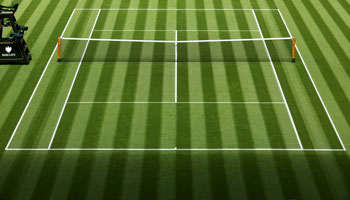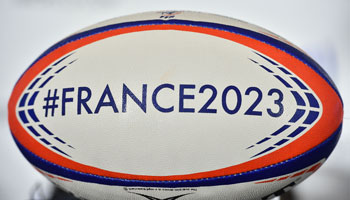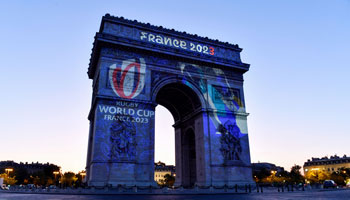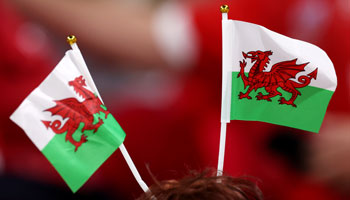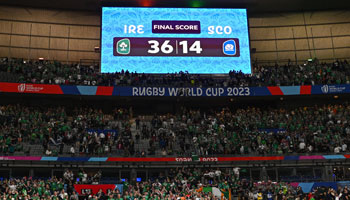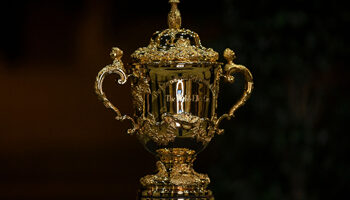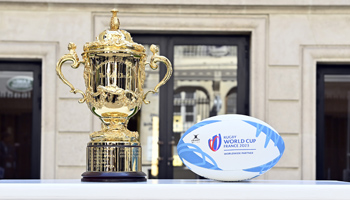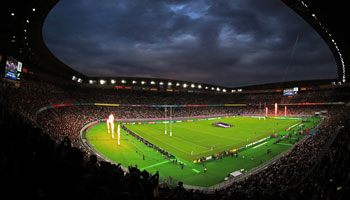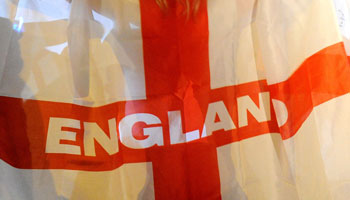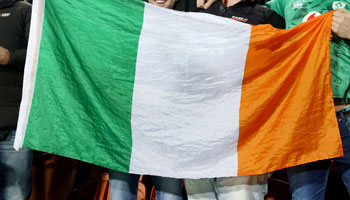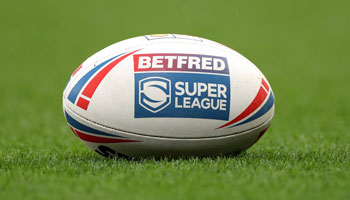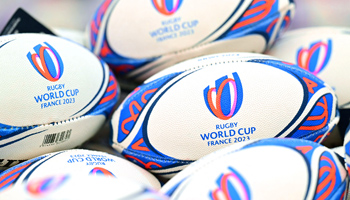The rugby pitch
bwin: Can you talk us through the rugby pitch – how big is it, what’s the size of the goal frames, the markings?
James Jones: Yes, certainly, the dimensions of a full length rugby pitch is 100 metres from try line to try line. Then you have the in-goal area beyond that, the area where a try can be scored, and the maximum an in-goal can be is 22 metres, the minimum it can be is 10 metres. The width of a rugby field is 70 metres. Then to the markings on the field: you have a try line at either end, the 100-metre mark either end of the field, and beyond that try line, you have the dead-ball line. You also have the halfway line, as well as markings 10 metres from either side of the halfway line. There is also a marking, known as the 22, which is 22 metres from the try line towards the field of play. The only other markings are the 5- and 15-metre markings, which are respectively 5 and 15 metres from the touchline on either side of the field.
The team and the player positions
bwin: How about the team? How many players does a rugby team have? What are their positions? And what role do they play?
James Jones: There are fifteen players on each side. Your line-up starts with number 15, who is your full back. He will be the last person, the last defender right at the back of the players and, traditionally, he is responsible for catching kicks from the opposition, or making last-gasp tackles.
On either side of the field then, if you imagine you are standing under the goalposts looking down the field, on either side towards the touchline, you have two wingers – numbers 14 and 11 – who are often the fastest players on the field. Usually, teams will try to get the ball to them to score the tries. Between those two players, you will have what’s known as an outside centre, number 13, and an inside centre, number 12. These are generally strong players, used for running up the field in power plays and running directly at the opposition, just smashing into people, for want of a better phrase.
To the side of number 12 ,you will then have the outside half, or fly half, both terms are used. These players tend to be a little smaller and are usually responsible for kicking the ball during conversion attempts after a successful try, and taking penalty kicks. The are also responsible for controlling the game. Then you have the number 9, who is known as the scrum half. He or she is responsible for placing the ball into the scrum in scrum situation. Or, if there has been a tackle and breakdown, they will generally be the first person to pass the ball out to the backline.
Coming into the forwards, that’s where guys get a lot bigger. If we start with the front row, you have numbers 1 and 3, who are known as prop forwards. In between them is number 2, known as a hooker. These players will form the front row in a scrummage, in which they lock arms and control the big and powerful scrummaging plays. Behind them are numbers 4 and 5, known as second rows. These are traditionally very, very tall players. These player will also scrummage, but most of the time, they are responsible for receiving the ball at a line out. When the ball is thrown in from the touchline, since they’re tall guys, they will jump and to try catch the ball.
Behind those players, then, you have number 6, known as the blindside flanker. He or she will be a very large player, known for making strong tackles around the field and scrummaging well. Alongside him, is number 7, known as the openside flanker. This is also a strong player but he is a little quicker than number 6, because he is supposed to be the first to arrive at a tackle and try to pinch the ball. And then at the very back, you have number 8, who is called… number 8. This is a very powerful player, again at the back of the scrum, and responsible for adding weight to the scrummage.

The key positions in rugby
bwin: What would you consider to be the key positions in rugby?
James Jones: The scrum half, as I mentioned earlier, is the first person to arrive at the break of play and decides whether to pass the ball out the backline or pass it to another forward, keeping it close. Another key player would be the number 10. He is usually the first receiver of any set play and will decide whether to kick, pass or run. This player will usually dictate how the game is played and what decisions are made on the field.
Since the game started, these positions have changed. There is a lot more kicking from the number 10, the outside half. There is a lot more tactical kicking now than there used to be with possession and territory being vital for coaching staff. But also I think the size of these players – number 10 used to be quite small, nippy and agile players. There are still some out there but as the game becomes more physical, you see these players getting larger as they have to make more tackles – so they’re a lot stronger than they used to be.
Rugby betting
At bwin you can bet on all important rugby competitions and tournaments. We offer great betting odds for the Six Nations Tournament, IRB Rugby World Cup, the Heineken Cup, the Aviva Premiership and other national and international rugby competitions. And for all major games we have live rugby betting too!
Betting rules
Just like rugby and any other sport, betting has its rules, designed for maximum playing pleasure and fair play. Have a look at how we make betting on sports fun, fair and easy for everyone.


